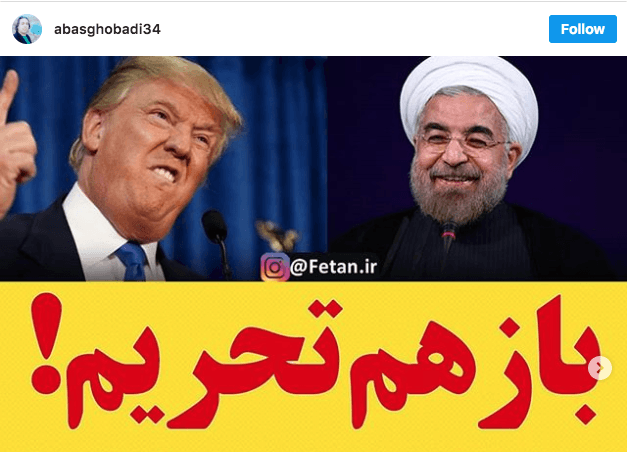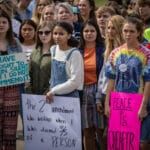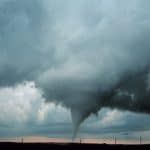What are Iranian hardliners saying on social media?
By Ariane Tabatabai | April 5, 2018

Editor’s note, December 20, 2018: Since we originally published this story, several of the Instagram posts to which it refers, which were embedded in the text, have been taken offline.
In the summer of 2009, when millions of protesters took to the streets of Iranian cities, the way they used social media to organize and disseminate information made headlines around the globe. That season’s unrest, sparked by the fraudulent reelection of hardline President Mahmoud Ahmadinejad, became known as the Green Movement. It faded after a few months, and the Islamic Republic soon outlawed major social media platforms. Twitter and Facebook have remained banned in Iran ever since. Iranians continue to use various software programs to bypass the regime’s filtering, though, and some regime officials and institutions retain their access, using social media to communicate with their constituents and the outside world. Besides Facebook and Twitter, Instagram and the messaging app Telegram are also popular.
So while the Iranian regime remains officially opposed to social media, some regime officials are active on these platforms. Many are hardliners, who make up the most conservative faction within the Islamic Republic (though not always a cohesive one). Their world view values a tight grip on society by the clerical and security establishments, severe limitations on civil rights, little engagement with the West and none with the United States, and opposition to the 2015 nuclear deal between Iran and six world powers, known as the Joint Comprehensive Plan of Action or JCPOA.These hardliners’ social media activity has gone largely unnoticed in the West, but it provides insight into their thinking. A look into the hundreds of accounts affiliated with hardline voices sheds important light on the domestic dynamics surrounding the nuclear deal. They are particularly worth examining as the nuclear agreement enters an even more vulnerable phase, with US officials seeking to undermine or end it, and in Iran, intensified infighting between moderates and reformists on one side and hardliners on the other.
Iranian fake news. In Iran as in the rest of world, fake news, propaganda, and conspiracy theories pre-date the advent of social media. Like people in other parts of the Middle East, Iranians are prone to conspiracy theories, particularly those pertaining to the role of foreign powers in the region. To be sure, foreign involvement has long been a real part of daily life in the Middle East. But as visitors to the region are quick to realize, myths about foreign involvement also exist, and they are both pervasive and bewildering. In fact, fake news built on conspiracy theories about foreign meddling helped drive the 1979 Islamic Revolution. The revolutionaries used the technology available to them back then—often cheap, low-tech means like cassette tapes, flyers, and leaflets—to disemminate fake news to the masses. For example, when an earthquake shook the city of Tabas in 1978, some revolutionaries blamed the quake on Western countries having dumped nuclear waste in the nearby Lut Desert, while others pontificated that it was caused by American underground nuclear tests. And the fake news didn’t begin with the revolution. As far back as the early 1970s, the novel Daei Jan Napoleon and the TV series based on it—now a beloved piece of pop culture consumed by generations of Iranians—satirized widespread conspiracy theories pertaining to the British presence and influence in Iran. Social media platforms, though, have made it much easier to create and spread fake news and conspiracy theories, and to reach an increasingly large and diverse target audience.
Who is behind the accounts? The social media accounts I have examined can be divided into four categories. First, there are the authorized accounts of hardline regime officials—such as former nuclear negotiator Saeed Jalili, who led Ahmadinejad’s nuclear talks with the Americans in 2012, and other current and former members of parliament, government, and the armed forces. These accounts indicate the faction’s official hawkish line. Their existence is perplexing, as Iran has outlawed and filters major social media platforms, but this limitation doesn’t appear to apply to regime officials—even as they periodically revive ideas on how to further restrict internet tools.
Second, since the start of the Iranian campaigns in Iraq and Syria, which are aimed at pushing back the Islamic State (ISIS) and propping up the regime of Syrian dictator Bashar al-Assad, accounts affiliated with Iran’s paramilitary powerhouse, the Revolutionary Guards, have proliferated rapidly. While some of these accounts clearly identify with elements of the Guards, such as its air force, ground forces, navy, or special operations units, others simply disseminate content that is not necessarily sanctioned by the Guards, but falls in line with their world view.
Third, a number of “news and analysis” outlets operate on the Persian-language internet, including on social media. While some of these outlets are official and well-known in the country and around the globe, such as the Revolutionary Guards-affiliated website Tasnim, others do not have clear affiliations.
Fourth, thousands of individuals with no clear affiliation or position roam the platforms, often disseminating highly partisan content, including harsh criticism and even mockery of moderates and reformists. By and large, the official or semi-official outlets steer clear of explicit ad hominem attacks, merely focusing on themes and specific issues, while making it clear whose policies they are targeting. But accounts in this last category name and shame.
Specifically, these unaffiliated hardline accounts target several categories of individuals and groups. They denounce reformists and moderates, either by deploying disinformation campaigns or simply by highlighting words and deeds they deem un-Islamic, counter to the values of the Iranian Revolution, or against the public interest. They also target intellectuals, artists, and those who have advocated for better ties with the West. Even when individuals are not named directly, the broader public does not escape the hardliners, with their accounts portraying people outside their base as superficial, unpatriotic, and outright corrupt.
Means and messages. Hardliners use videos, photos, memes, quotes, and charts to drive their message home. They often juxtapose photos of good and bad outcomes, or individuals they deem good and bad. Each item is accompanied by several hashtags, making it easier to find the material. And while each account usually has its own unique content, the same themes and grievances appear across multiple accounts. Most of the postings are in Persian, although they do frequently feature Arabic-language material, particularly religious content. The accounts also occasionally present English-language material. (Regime-affiliated websites frequently offer the option to view content in several languages, but this is less often the case on social media).
These days the JCPOA is a frequent topic, with several subthemes dominating hardline content on Instagram and Telegram. The nuclear agreement remains one of the most significant and controversial foreign policy issues in contemporary Iranian history. The moderates and reformists, championed by President Hassan Rouhani and his chief negotiator, Foreign Minister Javad Zarif, continue to hail the deal as a win-win solution to the nuclear crisis. For them, the JCPOA didn’t just remove the international sanctions that stymied their country’s economic life, it also paved the way for Iran’s reentry into the world community while ridding it of the threat of war. But Iranian hardliners see the nuclear deal differently. From their point of view, the country made a number of concessions that weakened its hard-won nuclear infrastructure, for very little in return. Hardline social media accounts make this view clear, in thousands of posts aimed at discrediting the JCPOA and pressuring Rouhani and his team. Several major themes emerge.
Trust in weapons, not talks. First, Iranian hardliners distrust negotiations as a tool to settle foreign policy matters. They draw on historical examples to note that their country has never had a fair shot or positive outcome in negotiations. In a popular meme on their Instagram accounts, as illustrated below, they remind their compatriots that the Qajar dynasty of 1785 to 1925—responsible for losing chunks of the country to various powers, particularly Russia and Britain, thereby shaping the map of modern Iran—lost territories “not through war but with treaties by Iranian statesmen who [wanted to] negotiate.”
This theme goes hand in hand with Iranians’ historical distrust of foreign powers. Hardliners like to point out that they and Supreme Leader Ayatollah Ali Khamenei warned the nation against trusting America and its partners, but that moderates and reformists nonetheless chose to negotiate away the country’s technological jewels.
Similarly, hardliners draw on their country’s recent anti-ISIS campaigns to push for a stronger stance against foreign powers, arguing that it is Iran’s military might, not its willingness to sit at the negotiating table, that has earned it the influence it enjoys throughout the region today. The social media accounts also tell Iranians that if their country had not sent troops to Syria and Iraq, Iran would have succumbed to ISIS just as their neighbors have. They justify Iranian support for the Houthi rebels in Yemen and the Assad regime in Syria by tying their presence in those countries to national security, and noting that foreign powers whose territories are far from the Middle East are also involved there. The Instagram post below points out that there are Australian troops serving in Iraq even though the distance between the two nations is significant and events in Iraq don’t directly affect Australia’s security. The meme aims to legitimize Iran’s presence in Yemen, noting that those arguing that Yemen—unlike Syria—isn’t home to any holy sites for Shias, must understand that their country’s involvement in that theater is about national security.
The hardliners also argue that Iran must deter foreign powers and non-state actors using military might, rather than by making more concessions. The accounts often draw on lessons from the Iran-Iraq War (1980-1988), using that experience to argue that Iran can only rely on itself. In the next post, which is making the rounds on Instagram, the poster echoes Khamenei’s claim that Iran must fight adversaries outside its borders or see its own streets turn into battlefields. The meme aims to justify the regime’s controversial support for various terrorist and insurgent groups throughout the region, including Lebanese Hezbollah, the Shia militias in Iraq, and the Houthis in Yemen. In response to critics who note that supporting these groups costs Iran dearly, the post says that contrary to popular belief, Iran’s non-state allies don’t just benefit from the country’s support, financing, and supply of weapons. These groups also serve as the nation’s “shield,” which allows it to defend itself outside its own territory, according to the post.
Be self-sufficient. Second, the revolutionary ideal of self-sufficiency is a prominent theme in hardline social media. Hardliners particularly believe in self-sufficiency as it pertains to technology, be it civilian, military, or dual-use. The idea that the country must become a beacon of scientific and technological progress, as it once was, is a core objective of the Islamic Republic and a frequent theme on social media. For example, a popular recent meme, illustrated below, quotes Khamenei declaring it his objective that Persian become an important language in science and technology thanks to Iranian scientists’ progress in those realms.
Hardliners also argue that their country needs to become more self-sufficient in general in order to recover economically. Since Khamenei proposed to declare the Persian year 1397 (which started on March 20) the year of domestic production and consumption, many social media accounts have been actively promoting domestic production. Some posts aim to promote domestically-produced goods, while others single out moderates and reformists who own and use imported products, such as watches, shoes, pens, and cars. The image below takes a different approach. It shows a Persian warrior with a hard hat and wrench wrestling a Chinese dragon labeled “made in China.” For context, it is worth noting that Iranian hardliners also recently led a social media campaign to boycott Chinese goods following the sinking of an Iranian oil tanker that had collided with a cargo ship off the coast of China, an incident that led to the death of the crewmembers and which the hardliners blamed on poor management and carelessness by Chinese authorities.
Hands off our missiles. Third, the accounts strongly criticize Rouhani’s idea of a so-called BARJAM 2, which he presented before US President Donald Trump’s election, when it appeared that US-Iran relations were on a better trajectory. (BARJAM is the Persian acronym for the JCPOA.) This proposed part two of US-Iran engagement would aim to settle non-nuclear-related sources of tension between Tehran and the international community, particularly the country’s ballistic missile program. The hardline accounts hype Iran’s missile capabilities, and warn against negotiating any limitations on them. In this post, showing a missile and the Iranian flag, the poster cites the negative outcomes of the JCPOA, as well as the regional threats faced by Iran, and urges the country to refuse limits on its ballistic missiles.
Arak was a huge mistake. Fourth, while hardliners don’t usually get specific about what nuclear provisions in the JCPOA they deem excessive, they make an exception for plans related to the Arak Heavy Water Reactor, which they post about frequently. The agreement required the reactor’s calandria to be removed, its core filled with cement, and the reactor to be redesigned with help from the Chinese. For the hardliners, who focus only on the first two parts of this three-step process, the nuclear deal’s Arak provisions demonstrate the ineptitude of the negotiating team and roll back the country’s technological progress. The post below features a map of Iran missing part of its territory in the area where the reactor is located. The missing piece is being carried away by Uncle Sam, and the post notes that Iran gave up nuclear energy in exchange for fertilizer. (Hardliners often point to the need to import basic goods like fertilizer as a failure of the Rouhani government.)
Pointing to their Arab neighbors in the Persian Gulf who also pursue nuclear energy, the hardliners note that while the Emiratis and Saudis are proud of their nuclear infrastructure and celebrate its expansion, Iranians celebrated pouring cement into Arak’s core. The post below puts two photos side by side, one allegedly showing Iranians celebrating the JCPOA and the other featuring Emiratis in front of their first operating nuclear reactor. The post says the JCPOA has caused nothing but damage to Iran.
Where’s the economic recovery? Fifth, hardliners have a lot to say about sanctions relief and economic recovery, or rather lack thereof. They argue that their country hasn’t gained any economic benefits from the JCPOA, and blame this fact on three things: The Rouhani government’s failure to secure the nation’s interests, outside powers cheating their country, and corrupt leadership. On this last subject, they single out government officials and members of parliament associated with reformists and moderates, while highlighting conservative officials’ (alledgedly) humble and modest lives. This post shows a recent favorite target of the hardliners, an official in the country’s Environment Department. According to the post, the official, Kaveh Madani, was dancing and having fun on taxpayers’ dime in Malaysia. (In response, he tweeted a series of flag emojis enumerating the countries he had visited or lived in to explain that he had never been to Malaysia.)
The nuclear deal didn’t make us safe. Sixth, hardliners criticize Rouhani for claiming that the nuclear agreement would dissuade the United States and Israel from targeting Iran. They believe that only military might—not negotiations —can deter such threats, as the post below suggests. The poster argues that “Iran will be attacked soon” and points to the recent appointment of John Bolton, the mega-hawk and avid advocate for regime change in Iran, as US National Security Advisor.
Europe is no better. Hardliners are obviously opposed to having anything to do with the United States. But while reformists and moderates point out that America and Europe are divided on Iran, the hardliners argue that Europe follows in Washington’s footsteps, and that Rouhani and his team are naïve for seeing Europe as independent and trustworthy. Below, the caption says that proponents of the JCPOA who believe Europe is politically independent from America should take note of European countries’ recent expulsions of Russian diplomats, which the post claims the Europeans did to follow in Washington’s footsteps. The meme is promoting fake news, however, as in reality the Europeans didn’t follow the US lead. Rather, European nations expelled Russian diplomats in response to a nerve agent attack perpetrated by Moscow on British soil, and America followed suit.
In fact, a frequent message on hardline social media is that the nuclear deal, far from ending the sanctions regime, actually led to more sanctions against Iran. As they explain it, the Europeans are now imposing new sanctions against Tehran in order to appease Trump and push him to preserve the JCPOA. This, the hardliners argue, demonstrates the futility of the agreement and the incoherence of Rouhani’s foreign and security policy. Ultimately, Iran loses out and, as the post below says, “the fruits of the JCPOA are collected not by Iran… but by America.”
Meanwhile, Western European leaders compare unfavorably to Russian President Vladimir Putin on hardline social media accounts. The post below contrasts two pictures, one showing Putin in a meeting with Khamenei and the other showing French Foreign Minister Jean-Yves Le Drian meeting with Rouhani. According to the meme, the top picture shows the president of the “the East’s superpower” respecting Khamenei while the bottom one shows the “minister of a Western country” clearly “belittling” Rouhani. Indeed, while Putin is sitting with his hands crossed on his lap—a sign of respect in traditional Iranian culture—Le Drian has crossed his legs—a sign of disrespect. During nuclear talks, hardliners found and distributed similar photos to argue that their country’s diplomats were being disrespected.
In short, hardline social media accounts depict reformists and moderates who continue to push for more negotiations and engagement with the West as weak, incapable, gullible, and corrupt.
They argue that these individuals and groups refuse to learn the lessons of the JCPOA, and instead continue to drive the country toward more reliance on others, fewer defensive capabilities, and, ultimately, instability and insecurity. In contrast, they celebrate Khamenei, the Revolutionary Guards, and conservative political figures like former presidential candidate Ibrahim Raisi, who lost to Rouhani in 2017.
Iran’s hardline social media accounts demonstrate the pressure the Rouhani government faces as it continues to implement the JCPOA in the face of uncertainty. Although the Rouhani government wishes to sustain the deal and build on it for greater international integration and economic recovery, it is constrained by pressure from its political opponents.
Together, we make the world safer.
The Bulletin elevates expert voices above the noise. But as an independent nonprofit organization, our operations depend on the support of readers like you. Help us continue to deliver quality journalism that holds leaders accountable. Your support of our work at any level is important. In return, we promise our coverage will be understandable, influential, vigilant, solution-oriented, and fair-minded. Together we can make a difference.
Topics: Columnists














